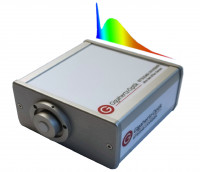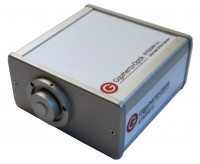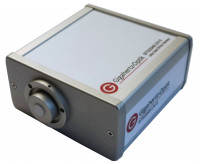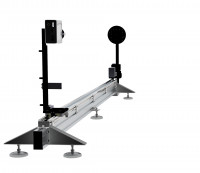Este producto ya no se fabrica. Es posible que queden existencias. Consulte las alternativas que figuran a continuación en "Productos similares" o póngase en contacto con nosotros directamente.
Productos alternativos para este producto descatalogado:
BTS2048-UV
Measure in the UV with this high-quality compact spectroradiometer
- High stray light reduction (reduced filter version of BTS2048-UV-S)
- Ultra fast interface and electronic shutter
- High optical resolution
- Ideal for all kind of measurement tasks (UV LED, Deuterium lamp, Tungsten lamp to solar radiation)
- High stray light reduction helps to transfer a precise calibration to precise measurements
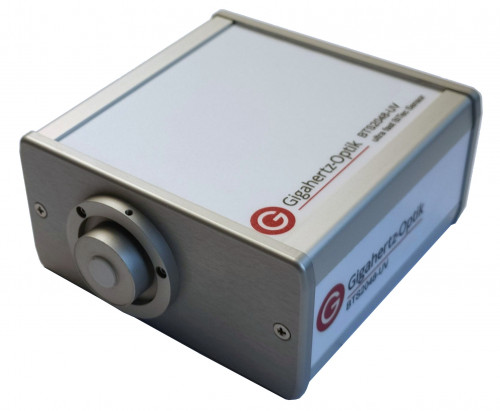
UV CCD spectroradiometer vs. broadband CCD spectrometer
The spectral responsivity of conventional CCD detectors usually lies within the 200 nm to 430 nm range. Often, this wide spectral responsivity range of the CCD detector is claimed as the responsivity range of the spectroradiometer. However, this fails to consider the spectral response function of the dispersion grating, which further reduces the detector’s responsivity in the UV spectrum. This results in significant errors in the UV measurement signal, primarily through long-wave stray light. The spectral resolution of broadband spectrometers is often not sufficient to guarantee precise measurements of e.g., narrowband UV LEDs.
CCD spectroradiometers that are specifically designed for UV radiation have a constrained spectral range and allow for a very high grating efficiency in connection with a very high spectral resolution. In addition, optical filters can also be used to significantly reduce stray light.
BTS2048-UV CCD spectroradiometer for UV radiation
The BTS2048-UV meets all the requirements of a high-end UV diode array spectroradiometer and is available at an attractive price despite its cutting-edge technology.
One unique feature of the BiTec sensor is its combination of a back-thinned CCD spectrometer and a Si photodiode that offers high linearity levels enabling extremely fast measurements (see technical article about BiTec sensor). The fully linearized 2048 pixel CCD detector with thermoelectric cooling offers a very wide dynamic range thanks to its integration time that ranges from 2 µs to 60 s. This enables precise measurements of UV LEDs in a broad intensity range. The design offers high optical resolution of 0.8 nm over the entire spectral measurement range from 190 nm to 430 nm.. The spectrometer is also equipped with two optical filters for automatic low stray light measurements (see also our technical article about stray light reduction for spectroradiometers). Such measurements are necessary for broadband UV lamps and UV LEDs in the presence of other light sources. The very high linearity SiC photodiode within the BiTec detector is used for linearization of the CCD or taken as a reference detector. The radiometric responsivity function of the SiC photodiode enables its use independent of the CCD. The radiometric precision can be auto-corrected using the respective spectral data. The device can therefore be used to perform fast measurements on very weak signals, something that makes the BTS20418-UV perfect for integration in goniometers. Despite its compact dimensions (103 mm x 107 mm x 52 mm – L x W x H), the BTS2048-UV spectroradiometer has a remote-controlled filter wheel with two optical filters and a shutter for dark measurement.
Precise Spectral Radiometry (low straylight)
To facilitate optimal use of the CCD sensor‘s dynamic range and to overcome the problems of most array spectoradiometers in the UV range, a remote-controlled filter wheel (open, closed, optical filter) is located in the optical beam path. This filters combined with smart measurement and stray light correction routines enables high quality measurements of the BTS2048-UV.
The BTS2048-UV is optimized for general measurements of other UV sources. Gigahertz-Optik’s stray light calibration technique in combination with further smart measurement routines enable the superior stray light suppression. See also our technical article about stray light reduction for spectroradiometers. The calibration of a BTS2048-UV additional stray light correction matrix is available optionally on request.
Absolute calibration of the absolute irradiance down to 200 nm!
The many years of experience and its well-equipped DAkkS calibration laboratory (D-K-15047-01-00) enables Gigahertz-Optik to offer traceable calibrations down to 200 nm. This broadens the application range of the BTS2048-UV and UV-C-LEDs. For the shortwave spectral range, Gigahertz-Optik GmbH has implemented a special deuterium lamp-based calibration strategy.
Use in front-end and back-end LED test measurements
The BTS2048-UV is perfectly suited for the testing of UV front-end and back-end LEDs in industrial applications. Its CCD detector integrates an electronic zero setting feature of all pixels before a measurement is triggered (electronic shutter). The electronic shutter and triggering of the measurement can be synchronized with a power supply via a trigger port when the test LED is operated in pulsed current mode. The powerful microprocessor only requires 7 ms to transfer a complete dataset to the system computer via the fast LAN interface.
Direct mounting instead of using a light guide
The BTS2048-UV spectroradiometer has a diffusor window and can therefore be used to measure the UV irradiance, incl. spectrum and peak wavelength, without any additional accessory components. With the diffuser window, the BTS2048-UV can also be mounted directly onto accessories such as integrating spheres, radiance lenses, and goniometers in order to measure the radiant power, radiance, and radiance distribution.
User software and developer software
The standard S-BTS2048 user software has a customizable user interface and offers a large number of display and function modules which can be activated when configuring the BTS2048-UV with the respective accessory components from Gigahertz-Optik GmbH. The S-SDK-BTS2048 developer software is offered for the integration of the BTS2048-UV in the customer’s own software.
Calibration
One essential quality feature of photometric devices is their precise and traceable calibration. The BTS2048-UV is calibrated by Gigahertz-Optik’s ISO/IEC 17025 calibration laboratory that was accredited by DAkkS (D-K-15047-01-00) for the spectral responsivity and spectral irradiance according to ISO/IEC 17025. The calibration also included the corresponding accessory components. Every device is delivered with its respective calibration certificate.
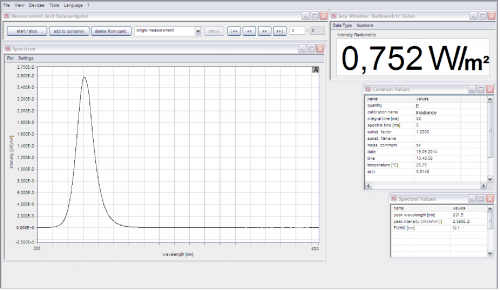
S-BTS2048 software for the BTS2048-UV
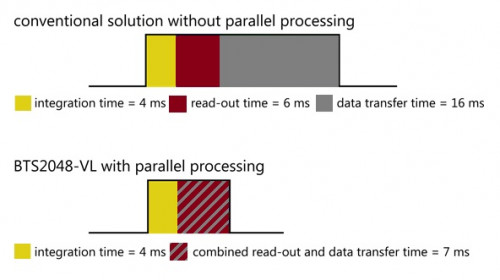
Ethernet interface reduces the datatransfer time
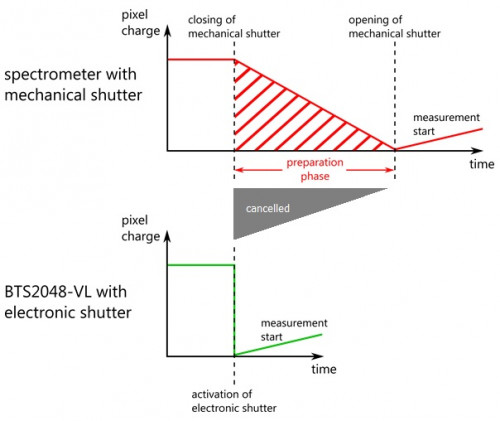
Electronic Shutter reduces the measurement time
Productos similares
